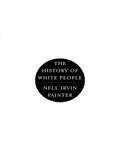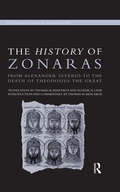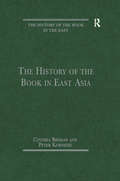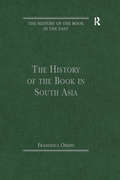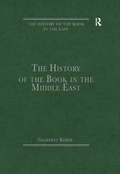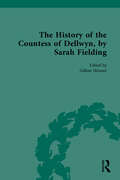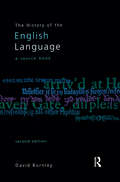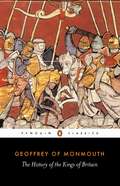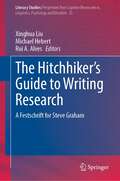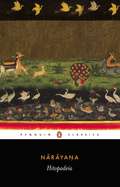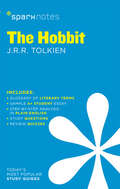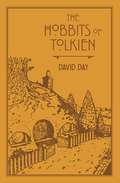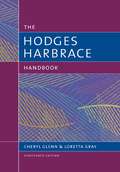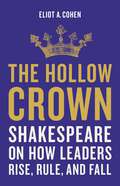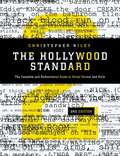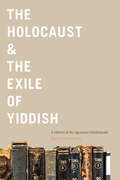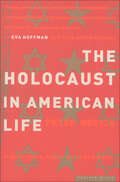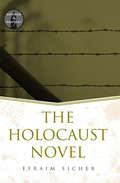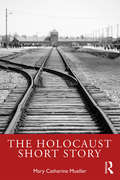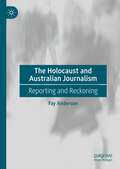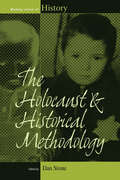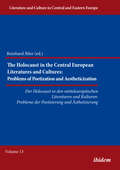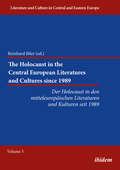- Table View
- List View
The History of White People
by Nell Irvin PainterA New York Times bestseller: "This terrific new book . . . [explores] the 'notion of whiteness,' an idea as dangerous as it is seductive."--Boston Globe Telling perhaps the most important forgotten story in American history, eminent historian Nell Irvin Painter guides us through more than two thousand years of Western civilization, illuminating not only the invention of race but also the frequent praise of "whiteness" for economic, scientific, and political ends. A story filled with towering historical figures, The History of White People closes a huge gap in literature that has long focused on the non-white and forcefully reminds us that the concept of "race" is an all-too-human invention whose meaning, importance, and reality have changed as it has been driven by a long and rich history of events.
The History of Zonaras: From Alexander Severus to the Death of Theodosius the Great
by Thomas Banchich Eugene LaneWhile an exile from Constantinople, the twelfth-century Byzantine functionary and canonist John Zonaras culled earlier chronicles and histories to compose an account of events from creation to the reign of Alexius Comnenus. For topics where his sources are lost or appear elsewhere in more truncated form, his testimony and the identification of the texts on which he depends are of critical importance. For his account of the first two centuries of the Principate, Zonaras employed now-lost portions of Cassius Dio. From the point where Dio’s History ended, to the reign of Theodosius the Great (d. 395), he turned to other sources to produce a uniquely full historical narrative of the critical years 235-395, making Books XII.15-XIII.19 of the Epitome central to the study of both late Roman history and late Roman and Byzantine historiography. This key section of the Epitome, together with Zonaras’ Prologue, here appears in English for the first time, both complemented by a historical and historiographical commentary. A special feature of the latter is a first-ever English translation of a broad range of sources which illuminate Zonaras’ account and the historiographical traditions it reflects. Among the authors whose newly translated works occupy a prominent place in the commentary are George Cedrenus, George the Monk, John of Antioch, Peter the Patrician, Symeon Magister, and Theodore Scutariotes. Specialized indices facilitate the use of the translations and commentary alike. The result is an invaluable guide and stimulus to further research for scholars and students of the history and historiography of Rome and Byzantium.
The History of the Book in East Asia (The History of the Book in the East)
by Cynthia BrokawThe history of the book in East Asia is closely linked to problems of language and script, problems which have also had a profound impact on the technology of printing and on the social and intellectual impact of print in this area. This volume contains key readings on the history of printed books and manuscripts in China, Korea and Japan and includes an introduction which provides an overview of the history of the book in East Asia and sets the readings in their context.
The History of the Book in South Asia (The History of the Book in the East)
by Francesca OrsiniThe History of the Book in South Asia covers not only the various modern states that make up South Asia today but also a multitude of languages and scripts. For centuries it was manuscripts that dominated book production and circulation, and printing technology only began to make an impact in the late eighteenth century. Print flourished in the colonial period and in particular lithographic printing proved particularly popular in South Asia both because it was economical and because it enabled multi-script printing. There are now vibrant publishing cultures in the nation states of South Asia, and the essays in this volume cover the whole range from palm-leaf manuscripts to contemporary print culture.
The History of the Book in the Middle East (The History of the Book in the East)
by Geoffrey RoperThis selection of papers by scholarly specialists offers an introduction to the history of the book and book culture in West Asia and North Africa from antiquity to the 20th century. The flourishing and long-lived manuscript tradition is discussed in its various aspects - social and economic as well as technical and aesthetic. The very early but abortive introduction of printing - long before Gutenberg - and the eventual, belated acceptance of the printed book and the development of print culture are explored in further groups of papers. Cultural, aesthetic, technological, religious, social, political and economic factors are all considered throughout the volume. Although the articles reflect the predominance in the area of Muslim books - Arabic, Persian and Turkish - the Hebrew, Syriac and Armenian contributions are also discussed. The editor’s introduction provides a survey of the field from the origins of writing to the modern literary and intellectual revivals.
The History of the Countess of Dellwyn, by Sarah Fielding (Chawton House Library: Women's Novels)
by Gillian SkinnerSarah Fielding was one of the most respected women authors of her generation and a key figure in the development of the novel. She was admired especially by Samuel Richardson, who famously commented that her ‘knowledge of the human heart’ was greater than that of her brother, the novelist Henry Fielding. This edition revives The Countess of Dellwyn, the only one of Sarah Fielding’s major works not previously available in a modern scholarly edition. The novel is satirical and didactic, taking as its targets fashionable life and modern marriage (and scandalous divorce) and narrated with acerbic wit by its anonymous third-person narrator. This edition benefits greatly from Gillian Skinner’s editorial work and it is a book that will be of great interest to researchers into the eighteenth-century novel and women’s writing of the period worldwide.
The History of the English Language: A Sourcebook
by David BurnleyThis second edition of The History of the English Language- A Sourcebook provides a comprehensive and accessible guide to the origins and development of the English language. First published in 1992, the book contains over fifty illustrative passages, drawn from the oldest English to the twentieth century. The passages are contextualised by individual introductions and grouped into the traditional periods of Old English, Early Middle English, Later Middle English, Early Modern English and Modern English. These periods are connected by brief essays explaining the major linguistic developments associated with each period, to produce a continuous outline history.For this new edition Professor Burnley has expanded the outline of linguistic features at each of the main chronological divisions and included more selections and illustrations. A new section has also been included to illustrate the language of advertising from the 18th century to the present. The book will be of general interest to all those interested in the origins and development of the English language, and in particular to students and teachers of the history of the English language at A-level and university.
The History of the Kings of Britain
by Geoffrey of MonmouthCompleted in 1136, The History of the Kings of Britain traces the story of the realm from its supposed foundation by Brutus to the coming of the Saxons some two thousand years later. Vividly portraying legendary and semi-legendary figures such as Lear, Cymbeline, Merlin the magician and the most famous of all British heroes, King Arthur, it is as much myth as it is history and its veracity was questioned by other medieval writers. But Geoffrey of Monmouth's powerful evocation of illustrious men and deeds captured the imagination of subsequent generations, and his influence can be traced through the works of Malory, Shakespeare, Dryden and Tennyson.
The Hitchhiker's Guide to Writing Research: A Festschrift for Steve Graham (Literacy Studies #25)
by Xinghua Liu Michael Hebert Rui A. AlvesThis book brings together the work of established scholars from around the world to celebrate and honor the many ways in which Steve Graham has contributed to the advancement of teaching and researching writing. Focusing on writing development and writing instruction in different contexts of education, original contributions in this book critically engage with theoretical and empirical issues raised in Steve Graham’s influential body of work and significantly extend our understandings of the importance of writing in developing learners’ literacy and the roles of writing in teaching and learning processes.This book is organized around themes central to Steve Graham's work, including theories and models of writing, effective instructional methods in teaching writing, surveys on teaching and learning writing, and systematic review studies on writing. Apart from regular chapters, the book also features personal and scholarly reflections revealing the powerful ways in which Steve Graham’s work has influenced our thinking in the field of writing research and continues to open up new avenues for future research endeavors.
The Hitopadesa
by M NarayanaComposed between 800 and 950 AD, Narayana's Hitopadesa is one of the best-known of all works in Sanskrit literature. A fascinating collection of fables, maxims and sayings in verse, it combines a wide variety of writings from earlier authors in one volume - a 'garden of pleasing stories' created to provide guidance, wisdom and political advice to the reader. With elegance and great humour, Narayana weaves a framework for the classic tales, here narrated by animals who quote from and reflect on stories from the Pancatantra and other traditional sources. At once an anthology of folk wisdom and an original and satirical work in its own right, the Hitopadesa has been deeply admired and widely read for more than a thousand years for its humorous and profound reflections on human lives, loves, follies and philosophies.
The Hobbit SparkNotes Literature Guide (SparkNotes Literature Guide Series #33)
by SparkNotesThe Hobbit SparkNotes Literature Guide by J.R.R. Tolkien Making the reading experience fun! When a paper is due, and dreaded exams loom, here's the lit-crit help students need to succeed! SparkNotes Literature Guides make studying smarter, better, and faster. They provide chapter-by-chapter analysis; explanations of key themes, motifs, and symbols; a review quiz; and essay topics. Lively and accessible, SparkNotes is perfect for late-night studying and paper writing. Includes:An A+ Essay—an actual literary essay written about the Spark-ed book—to show students how a paper should be written.16 pages devoted to writing a literary essay including: a glossary of literary termsStep-by-step tutoring on how to write a literary essayA feature on how not to plagiarize
The Hobbits of Tolkien: An Illustrated Exploration of Tolkien's Hobbits, and the Sources that Inspired his Work from Myth, Literature and History
by David DayAn entire race was born when J.R.R. Tolkien scrawled on a leaf, 'In a hole in the ground there lived a hobbit.' From the invention of that single word (hobbit) Tolkien became the explorer and chronicler of the character, their race and their significant role in his fantastical world, Middle-earth.Here in his latest book, Tolkien expert David Day unpicks the myriad of riddles, puns and mystical meanings in Tolkien's works; The Hobbit and The Lord of the Rings.This work is unofficial and is not authorized by the Tolkien Estate or HarperCollins Publishers.
The Hobbits of Tolkien: An Illustrated Exploration of Tolkien's Hobbits, and the Sources that Inspired his Work from Myth, Literature and History (Tolkien Illustrated Guides #6)
by David DayAn entire race was born when J.R.R. Tolkien scrawled on a leaf, 'In a hole in the ground there lived a hobbit.' From the invention of that single word (hobbit) Tolkien became the explorer and chronicler of the character, their race and their significant role in his fantastical world, Middle-earth.Here in his latest book, Tolkien expert David Day unpicks the myriad of riddles, puns and mystical meanings in Tolkien's works; The Hobbit and The Lord of the Rings.
The Hodges Harbrace Handbook (19th Edition)
by Cheryl Glenn Loretta GrayImprove your writing skills with THE HODGES HARBRACE HANDBOOK, 19th Edition! Learn how to write effectively, choose the best information, arrange it well, and use the most appropriate language when writing for a particular audience. This grammar-first handbook provides complete coverage of writing essentials to help you develop the skills you need to be a successful college writer, including grammar, style, punctuation, mechanics, writing, and research.
The Hollow Crown: Shakespeare on How Leaders Rise, Rule, and Fall
by Eliot A. CohenWhat Shakespeare&’s plays can teach us about modern-day politics William Shakespeare understood power: what it is, how it works, how it is gained, and how it is lost. In The Hollow Crown, Eliot A. Cohen reveals how the battling princes of Henry IV and scheming senators of Julius Caesar can teach us to better understand power and politics today. The White House, after all, is a court—with intrigue and conflict rivaling those on the Globe&’s stage—as is an army, a business, or a university. And each court is full of driven characters, in all their ambition, cruelty, and humanity. Henry V&’s inspiring speeches reframe John F. Kennedy&’s appeal, Richard III&’s wantonness illuminates Vladimir Putin&’s brutality, and The Tempest&’s grace offers a window into the presidency of George Washington. An original and incisive perspective, The Hollow Crown shows how Shakespeare&’s works transform our understanding of the leaders who, for good or ill, make and rule our world.
The Hollywood Standard: The Complete and Authoritative Guide to Script Format and Style (2nd edition)
by Christopher Riley"The Hollywood Standard" describes, in clear, vivid prose and hundreds of examples, how to format every element of a screenplay or television script. A reference for everyone who writes for the screen, from the novice to the veteran, this is the dictionary of script format, with instructions for formatting everything from the simplest master scene heading to the most complex and challenging musical underwater dream sequence. This new edition includes a quick start guide, plus new chapters on avoiding a dozen deadly formatting mistakes, clarifying the difference between a spec script and production script, and mastering the vital art of proofreading. For the first time, readers will find instructions for formatting instant messages, text messages, email exchanges and caller ID.
The Holocaust & the Exile of Yiddish: A History of the Algemeyne Entsiklopedye
by Barry TrachtenbergIn the early 1930s in Berlin, Germany, a group of leading Eastern European Jewish intellectuals embarked upon a project to transform the lives of millions of Yiddish-speaking Jews around the world. Their goal was to publish a popular and comprehensive Yiddish language encyclopedia of general knowledge that would serve as a bridge to the modern world and as a guide to help its readers navigate their way within it. However, soon after the Algemeyne entsiklopedye (General Encyclopedia) was announced, Hitler’s rise to power forced its editors to flee to Paris. The scope and mission of the project repeatedly changed before its final volumes were published in New York City in 1966. The Holocaust & the Exile of Yiddish untangles the complicated saga of the Algemeyne entsiklopedye and its editors. The editors continued to publish volumes and revise the encyclopedia’s mission while their primary audience, Eastern European Jews, faced persecution and genocide under Nazi rule, and the challenge of reestablishing themselves in the first decades after World War II. Historian Barry Trachtenberg reveals how, over the course of the middle decades of the twentieth century, the project sparked tremendous controversy in Jewish cultural and political circles, which debated what the purpose of a Yiddish encyclopedia should be, as well as what knowledge and perspectives it should contain. Nevertheless, this is not only a story about destruction and trauma, but also one of tenacity and continuity, as the encyclopedia’s compilers strove to preserve the heritage of Yiddish culture, to document its near-total extermination in the Holocaust, and to chart its path into the future.
The Holocaust In American Life
by Peter NovickThis “courageous and thought-provoking book” examines how the Holocaust came to hold its unique place in American memory (Foreign Affairs).Prize–winning historian Peter Novick explores in absorbing detail the decisions that moved the Holocaust to the center of American life. He illuminates how Jewish leaders invoked its memory to muster support for Israel, and how politicians in turn used it to score points with Jewish voters. With insight and sensitivity, Novick raises searching questions about these developments, their meaning, and their consequences. Does the Holocaust really teach useful lessons and sensitize us to atrocities, or, by making the Holocaust the measure, does it make lesser crimes seem “not so bad”? Have American Jews, by making the Holocaust the emblematic Jewish experience, given Hitler a posthumous victory, tacitly endorsing his definition of Jews as despised pariahs? What are we to make of the fact that while Americans spend hundreds of millions of dollars for museums recording a European crime, while comparatively little is done to memorialize American slavery?A New York Times Notable Book
The Holocaust Novel (Genres in Context)
by Efraim SicherThe first comprehensive study of Holocaust literature as a major postwar literary genre, The Holocaust Novel provides an ideal student guide to the powerful and moving works written in response to this historical tragedy. This student-friendly volume answers a dire need for readers to understand a genre in which boundaries and often blurred between history, fiction, autobiography, and memoir. Other essential features for students here include an annotated bibliography, chronology, and further reading list. Major texts discussed include such widely taught works as Night, Maus, The Shawl, Schindler's List, Sophie's Choice, White Noise, and Time's Arrow.
The Holocaust Short Story
by Mary Catherine MuellerThe Holocaust Short Story is the only book devoted entirely to representations of the Holocaust in the short story genre. The book highlights how the explosiveness of the moment captured in each short story is more immediate and more intense, and therefore recreates horrifying emotional reactions for the reader. The main themes confronted in the book deal with the collapse of human relationships, the collapse of the home, and the dying of time in the monotony and angst of surrounding death chambers. The book thoroughly introduces the genres of both the short story and Holocaust writing, explaining the key features and theories in the area. Each chapter then looks at the stories in detail, including work by Ida Fink, Tadeusz Borowski, Rokhl Korn, Frume Halpern, and Cynthia Ozick. This book is essential reading for anyone working on Holocaust literature, trauma studies, Jewish studies, Jewish literature, and the short story genre.
The Holocaust and Australian Journalism: Reporting and Reckoning
by Fay AndersonThis book explores the Australian press reporting of the persecution and genocide of European Jews, and the extent to which the news of the Holocaust was known and believed, revealed and hidden, and acknowledged and minimised. Spanning the coverage of Hitler’s political ascent in the 1920s through to the Nazis’ extermination campaign, it culminates in the accounts of the trials of Nazi war criminals and the post-war transnational migration to Australia of Holocaust survivors, to a country far from universally welcoming in its reception of them. The book also tells the story of the journalists who reported on these tragic events and the editors who published them, along with the political, social and cultural context in which they worked, in an environment influenced by exclusionary ideas about race and nationality that did not necessarily inspire sympathy for Jews and their trauma. This book sheds light on the ethics of reporting human suffering, violence and genocide and – centrally – on the role of the press in shaping Australia’s collective memory of the Holocaust. It encourages readers to think critically about media power, public apathy, advocacy, and the importance of truth. Disturbing evidence of increasing anti-Semitism in Australia as elsewhere, along with continuing Holocaust denial, provide an additional urgency to this study.
The Holocaust and Historical Methodology
by Dan StoneIn the last two decades our empirical knowledge of the Holocaust has been vastly expanded. Yet this empirical blossoming has not been accompanied by much theoretical reflection on the historiography. This volume argues that reflection on the historical process of (re)constructing the past is as important for understanding the Holocaust-and, by extension, any past event-as is archival research. It aims to go beyond the dominant paradigm of political history and describe the emergence of methods now being used to reconstruct the past in the context of Holocaust historiography.
The Holocaust in Central European Literatures and Cultures: Problems of Poetization and Aestheticization
by Reinhard IblerRelating the Holocaust to poetic and aesthetic phenomena has often been considered taboo, as only authentic testimony, documents, or at least 'unliterary', prosaic approaches were seen as appropriate. However, from the very beginning of Holocaust literature and culture, there were tendencies towards literarization, poetization, and ornamentalization. Nowadays, aesthetic approaches-also in provocative, taboo-breaking ways-are more and more frequently encountered and seen as important ways to evoke the attention required to keep the cataclysm alive in popular memory. The essays in this volume use examples predominantly from Polish, Czech, and German Holocaust literature and culture to discuss this controversial subject. Topics include the poetry of concentration camp detainees, lyrical poetry about the Holocaust, poetic tendencies in narrative literature and drama, ornamental prose about the Holocaust, and the devices and functions of aestheticization in Holocaust literature and culture.
The Holocaust in Central European Literatures and Cultures: Problems of Poetization and Aestheticization (Literature and Culture in Central and Eastern Europe #13)
by Reinhard IblerRelating the Holocaust to poetic and aesthetic phenomena has often been considered taboo, as only authentic testimony, documents, or at least 'unliterary', prosaic approaches were seen as appropriate. However, from the very beginning of Holocaust literature and culture, there were tendencies towards literarization, poetization, and ornamentalization. Nowadays, aesthetic approaches—also in provocative, taboo-breaking ways—are more and more frequently encountered and seen as important ways to evoke the attention required to keep the cataclysm alive in popular memory. The essays in this volume use examples predominantly from Polish, Czech, and German Holocaust literature and culture to discuss this controversial subject. Topics include the poetry of concentration camp detainees, lyrical poetry about the Holocaust, poetic tendencies in narrative literature and drama, ornamental prose about the Holocaust, and the devices and functions of aestheticization in Holocaust literature and culture.
The Holocaust in the Central European Literatures and Cultures since 1989: Der Holocaust in den mitteleuropäischen Literaturen und Kulturen seit 1989
by Reinhard Ibler Aleksandra Bak-Zawalski Katharina Bauer Sascha Feuchert Grzegorz Gazda Anja Golebiowski Elisa-Maria Hiemer Jiri Holy Hana Hribkova Agnieszka Izdebska Danuta Szajnert Valentina Kaptayn Malgorzata Leyko Markus Roth Wolfgang Schwarz Marija Sruk Filip Tomas Tereza Tomasova Hans-Christian Trepte Olga ZitovaThis insightful book assembles a great variety of contributions on the literature and culture of the Holocaust since 1989. Focusing on Poland, the Czech Republic, and Germany, what becomes apparent is that the Nazi genocide continues to be a pivotal issue in literature, theatre, and film. Including overviews of the literary and cultural developments of the last decades, the chapters cover a wide variety of authors of both the older and younger generation such as Ruth Klüger, Roma Ligocka, Leon Weliczker, Andrzej Bart, Marek Bienczyk, and Magdalena Tulli. The growing use of provocative and taboo-breaking forms of expression turns out to be an important instrument in keeping alive the memory of the horrible events in the collective memory.
